秦军校
祖籍河南省三门峡市,现定居广东省深圳市。
深圳市摄影家协会副主席,中国摄影家协会纪实摄影委员会委员,中国民俗摄影协会助理会长、博学会士,世界华人摄影学会会员,广东省摄影家协会咨询顾问委员会委员,中国摄影函授学院深圳分院教授,中国图书出版社社长,港深珠澳摄影联盟主席,港深珠澳摄影报总编辑,1983年开始发表摄影作品。
展览;
2015年, 纪实摄影作品受邀参加首届“精彩瞬间——深圳市摄影家优秀作品“展览。
2010年9月,被邀请参加“深圳黑白典藏摄影24人展”,其作品在深圳华·美术馆展出。
2010年, 被邀请在上海参加全摄影画廊“夏至”收藏级作品摄影联展。
2008年6月,在深圳市民中心艺廊举办“历史深圳”个人摄影作品展。
2004年9月,倡导和推进了“人文深圳”摄影联展,并在第四届“平遥国际摄影节”上展出。
2004年1月,代表中国摄影家协会被邀请前往台湾参加“千禧之爱” 大型摄影展,参展题目“红白喜事”。
2003年9月,被邀请参加第三届“平遥国际摄影节”,参展题目“红白喜事”。
2002年12月,在北京民族文化宫举办“终结小脚——跨世纪的中国最后一代小脚女人”摄影展并举办研讨会。
2002年9月,作品“关注麻风岛”被再一次邀请参加中国首届“都匀国际摄影博览会”。
2001年9月,被邀请参加首届“平遥国际摄影节”,参展题目“关注麻风岛”。
2001年, 被邀请在北京参加“中国影像——痕”摄影联展。
收藏:
2011年10月,纪实摄影作品被深圳关山月美术馆收藏。
2011年6月, 纪实摄影作品被深圳华·美术馆收藏。
2010年11月,《终结小脚——中国妇女缠足考》从近五千本摄影书籍、画册中精选出并被编入《摄影好书选集》,被台湾摄影博物馆收藏。
2006年 《红白喜事》、《跨世纪的中国最后一代小脚女人》作品被河南博物院收藏。
2003年12月,被邀请参加广东美术馆“中国人本——纪实在当代”大型摄影展,作品被广东美术馆收藏。
出版:
2014年,《影像典藏》作品集文本面世
2013年,《我在三都过端节》,中国图书出版社
2010年,《地坑窑院——中国人最后的“穴居”式民居》,荣获“PIP——凤凰卫视优秀摄影画册奖”第一名。中国图书出版社
2005年,《为小脚女人留影》,中国图书出版社
2005年,《终结小脚——中国妇女缠足考》,浙江文艺出版社
2003年,《红白喜事》摄影画册,中国摄影出版社
2000年,《婚俗与丧俗》大型纪实摄影集,中国摄影出版社
荣誉称号:
2008年,荣获“广东摄影50年突出贡献摄影家”称号
2006年,荣获“中国摄影50年突出贡献摄影工作者”称号
2002年,被《摄影之友》杂志评为本年度中国摄影界重要人物之一。
Qin Xiaojun
Originally from Sanmenxia, Henan province. Currently lives in Shenzhen, Guangdong.
Served as vice chairman of Shenzhen Photographer Association, member of China Photographers' Association Documentary Photography Committee, assistant President of China Folk Photography Association, member of The Society of World Wide Ethnic Chinese Photographers Ltd., member of Advisory
Committee of Guangdong Photographers Association, professor of China Photography Correspondence College, Shenzhen Branch, president of China Book Publishing House, chairman of HSZM Photographic Alliance and chief director of HSZM Photographic Paper. He began to publish Photographic works
from 1983.
Exhibitions
2015 “Wonderful Moment– Shenzhen Excellent Photo Show”, Shenzhen
2010 “Black and White Collections of 24 Shenzhen’s Photographers”, OCT Art and Design Gallery, Shenzhen
2010 “Summer Solstice”, OFOTO Gallery, Shanghai.
“Shenzhen in History” , Art Gallery of Shenzhen Civic Center, Shenzhen
“Humanized Shenzhen”, Shenzhen
“Love of Millennium”, Taiwan
“Weddings and Funerals”, the 3rd Pingyao International Photography Festival
“End of Bound-feet Age——Trans-century Last Generation of Bound-feet Women in China” , Beijing Cultural Palace of Nationalities, Beijing
2002 “Caring for Lepra Island”, 1st China (Duyun) Int’l Photography Show
“Caring for Lepra Island”, the 1st Pingyao Int’l Photography Festival
“Chinese Photographic Works—— Marks”, Beijing
Collections
Documentary work collected by Shenzhen Guan-Shanyue Art Gallery
Documentary work collected Shenzhen-Hua Gallery
End of Bound-Feet Age –Investigation on Chinese Bound-feet Women, Taipei Art Museum of Photography
Weddings and Funerals and Last Generation of China’s Bound-Feet Women, Henan Museum of Art
Documentary photographic work presented at the exhibition “Documentary Photography In Contemporary Chinese”, collected by Guangdong Art Museum
Publications
"Image collection"
I Celebrated the Duan Festival in Sandu; China Book Publishing House
Sunken Courtyard of Cave Dwelling – Chinese Last Cave-style Folk House; Phoenix Satellite TV Good Photographic Album Award; China Book Publishing House
Photograhying the Women with Bound Feet; China Book Publishing House
End of Bound-Feet Age –Investigation on Chinese Bound-feet Women, Zhejiang Literature and Art Publishing House
“Weddings and Funerals” Photo Album; China Photographic Publishing House
“Wedding and Funeral Customs”, China Photographic Publishing House
Awards
Honor of Outstanding Contributor of Guangdong 50 years photography
Honor of Outstanding Contributor of China 50 years photography
“Outstanding Figures in Chinese Photography Industry”, Friends Of Photographing Magzine
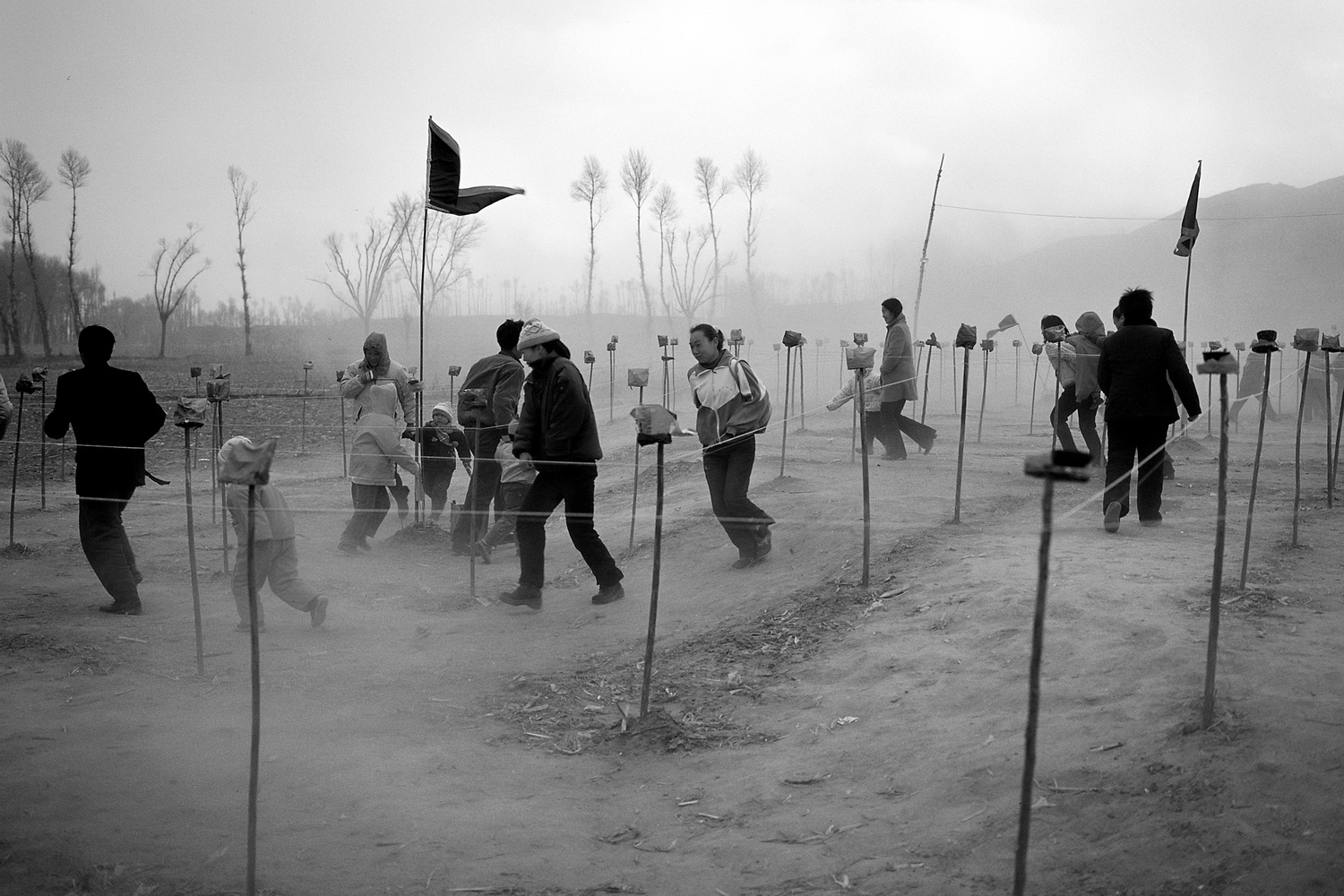
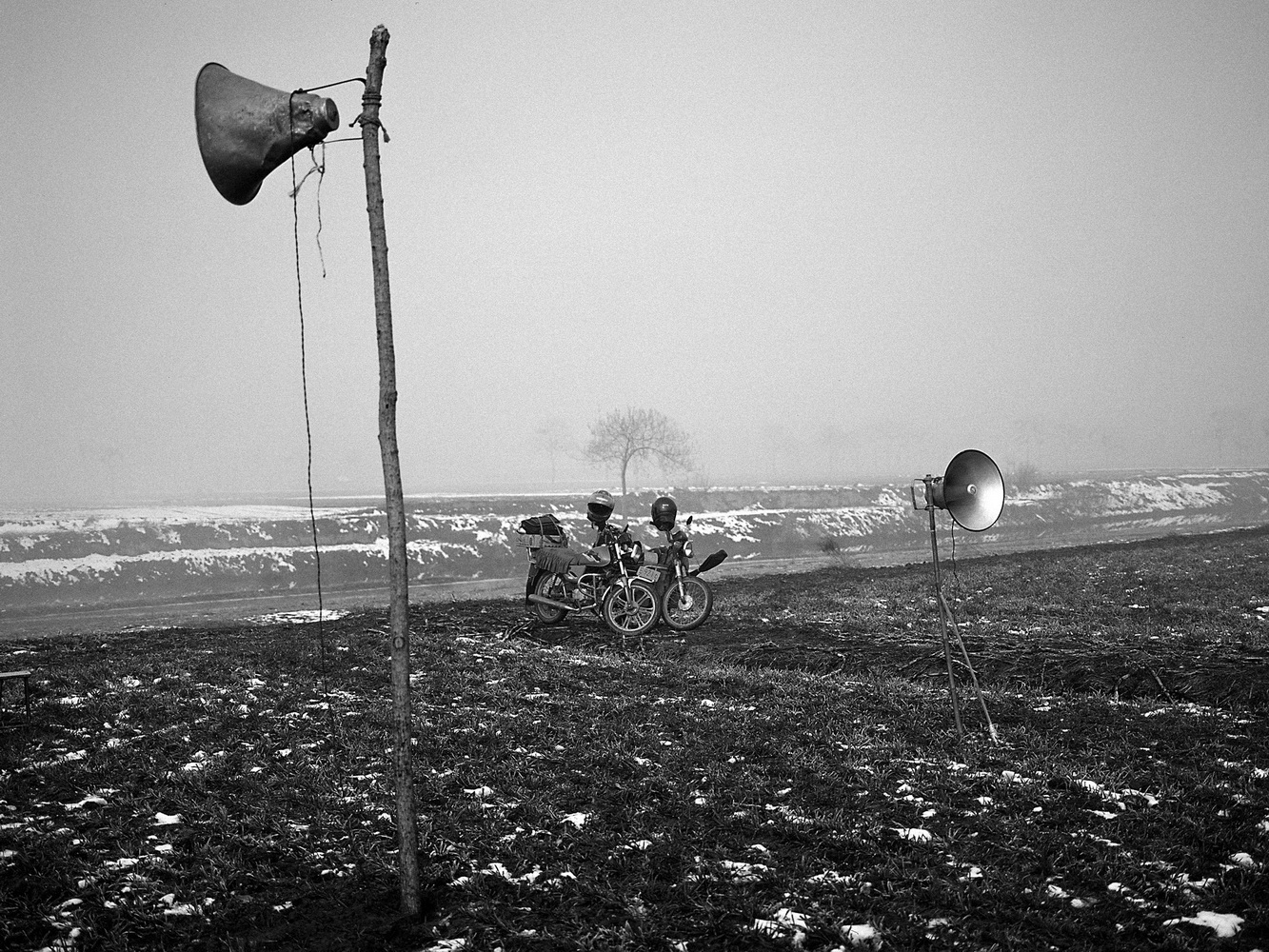
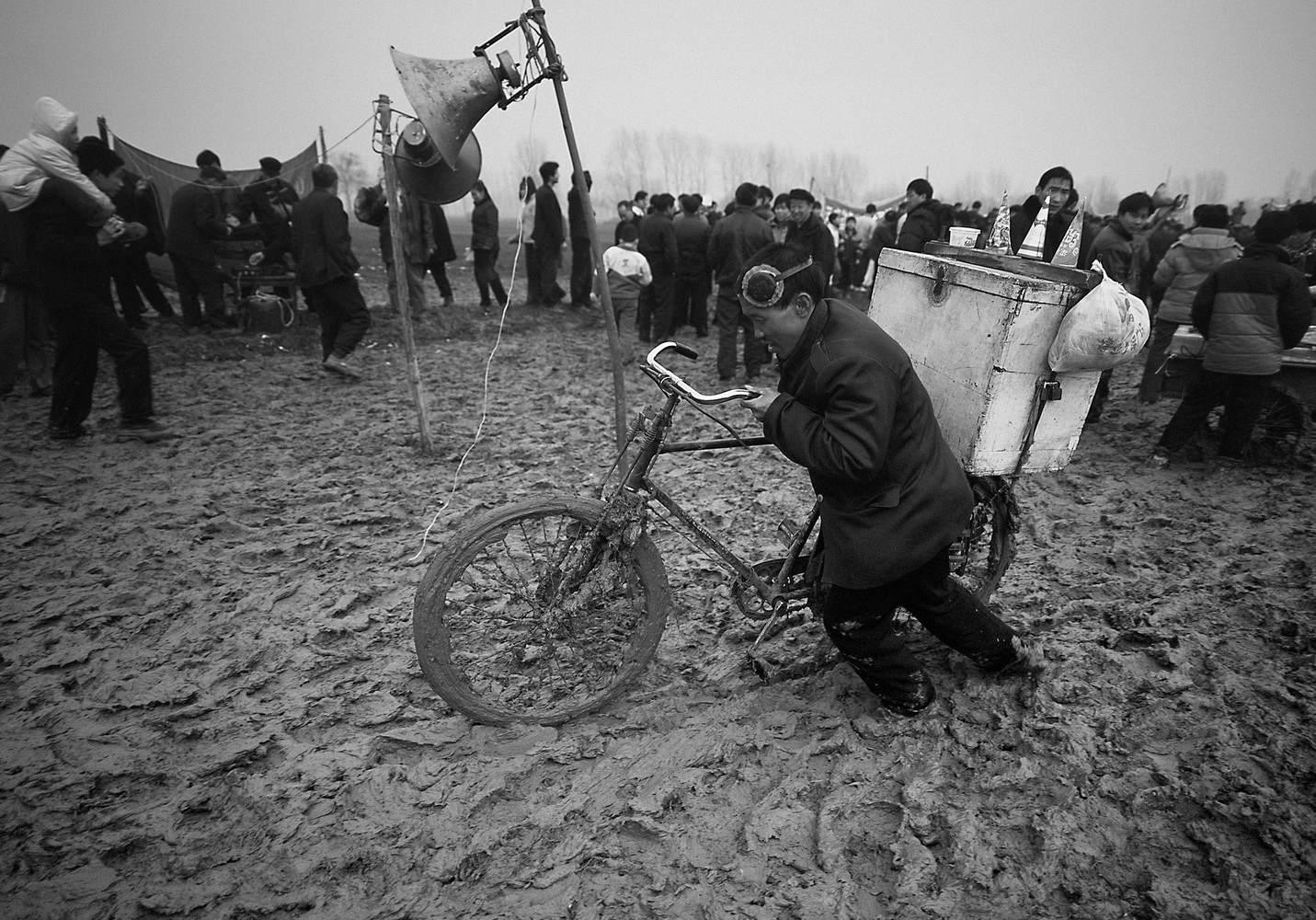
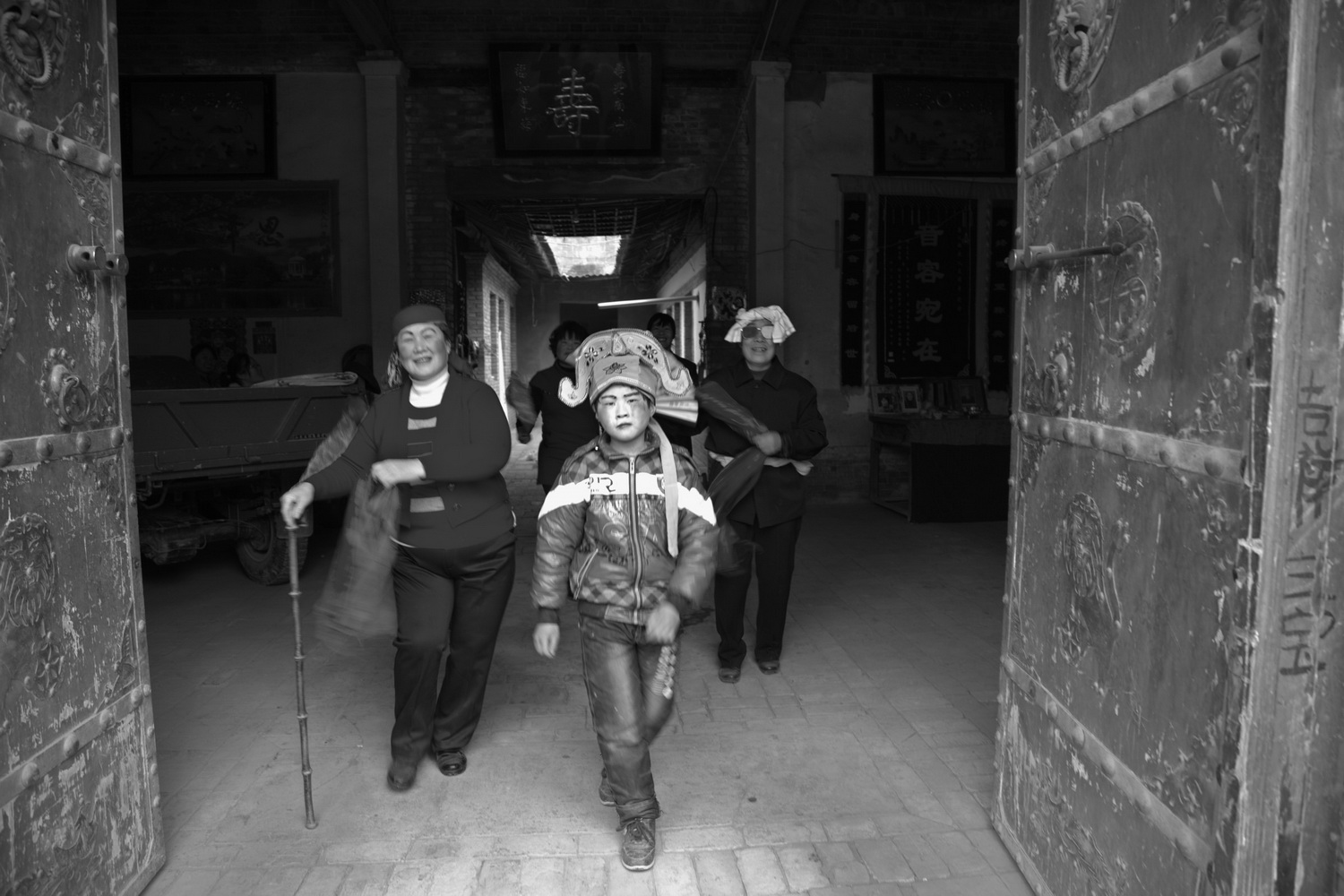
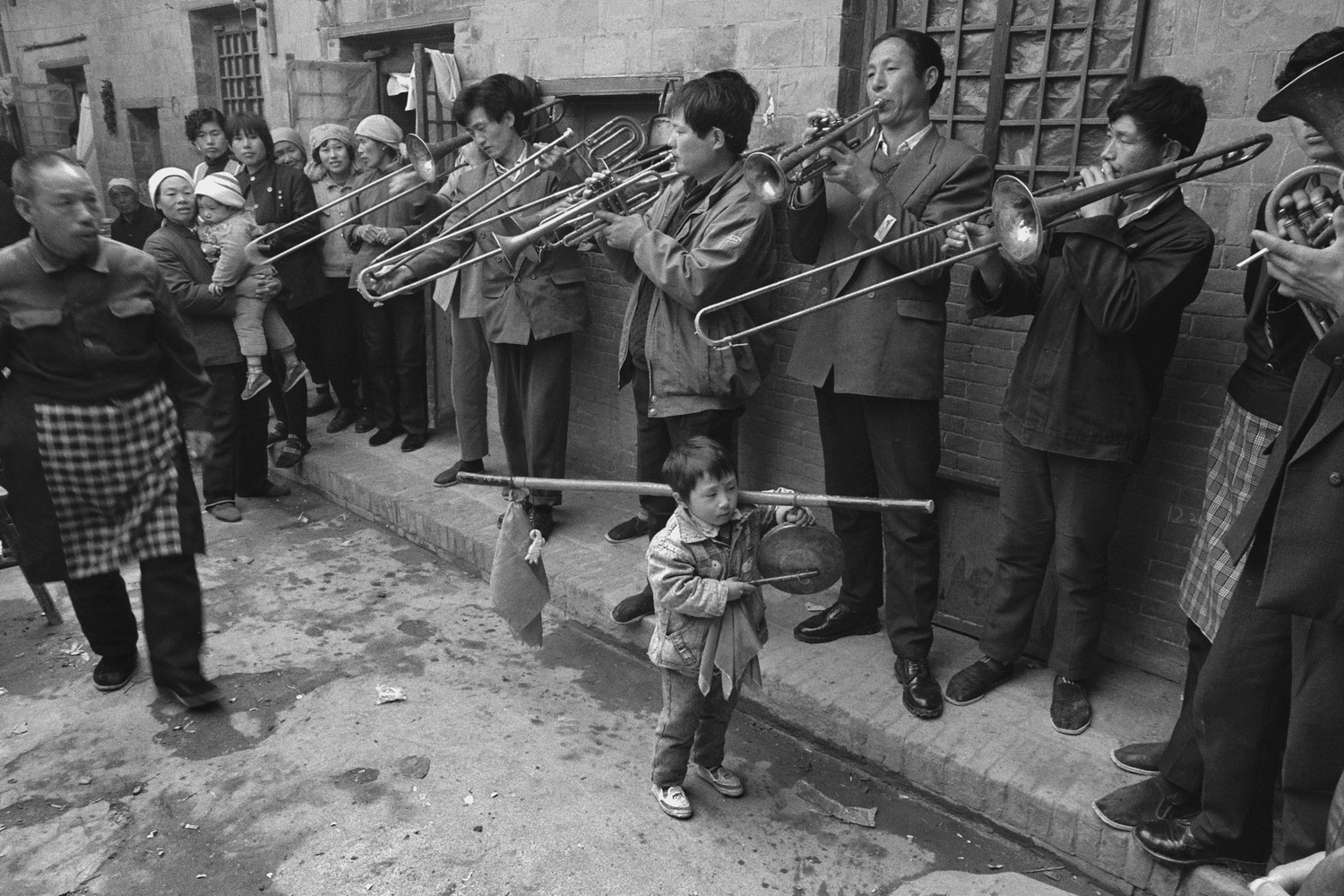
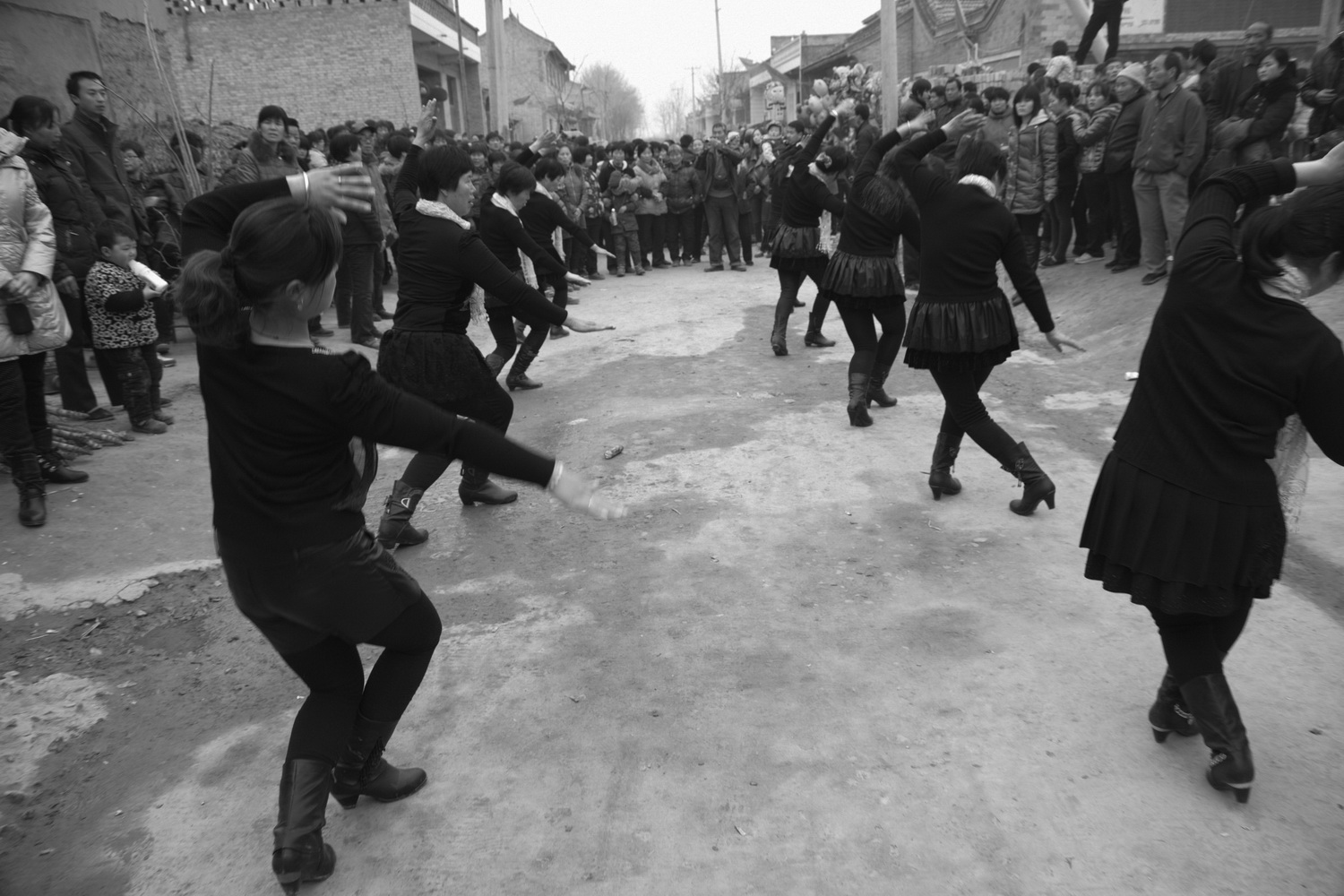
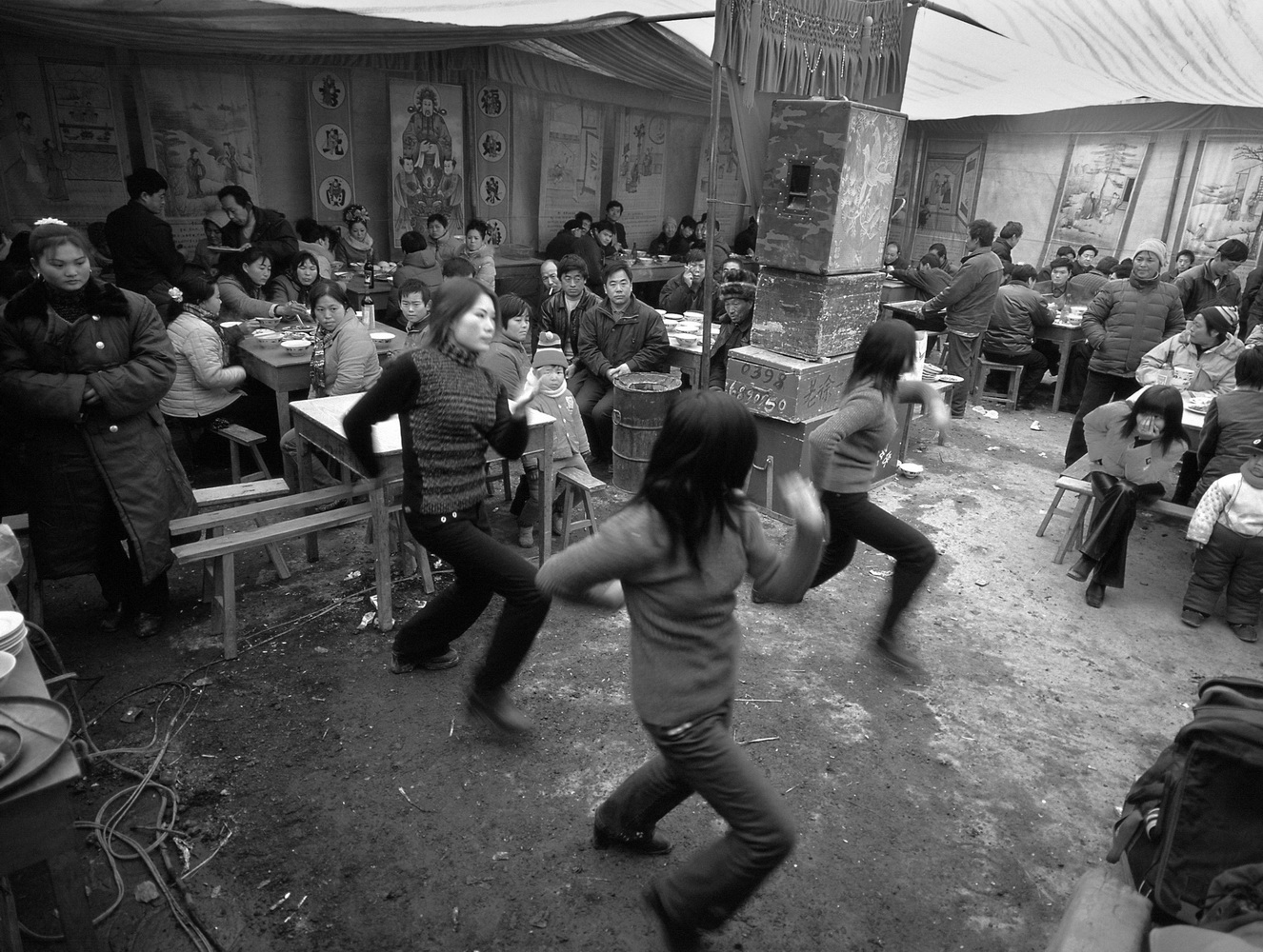
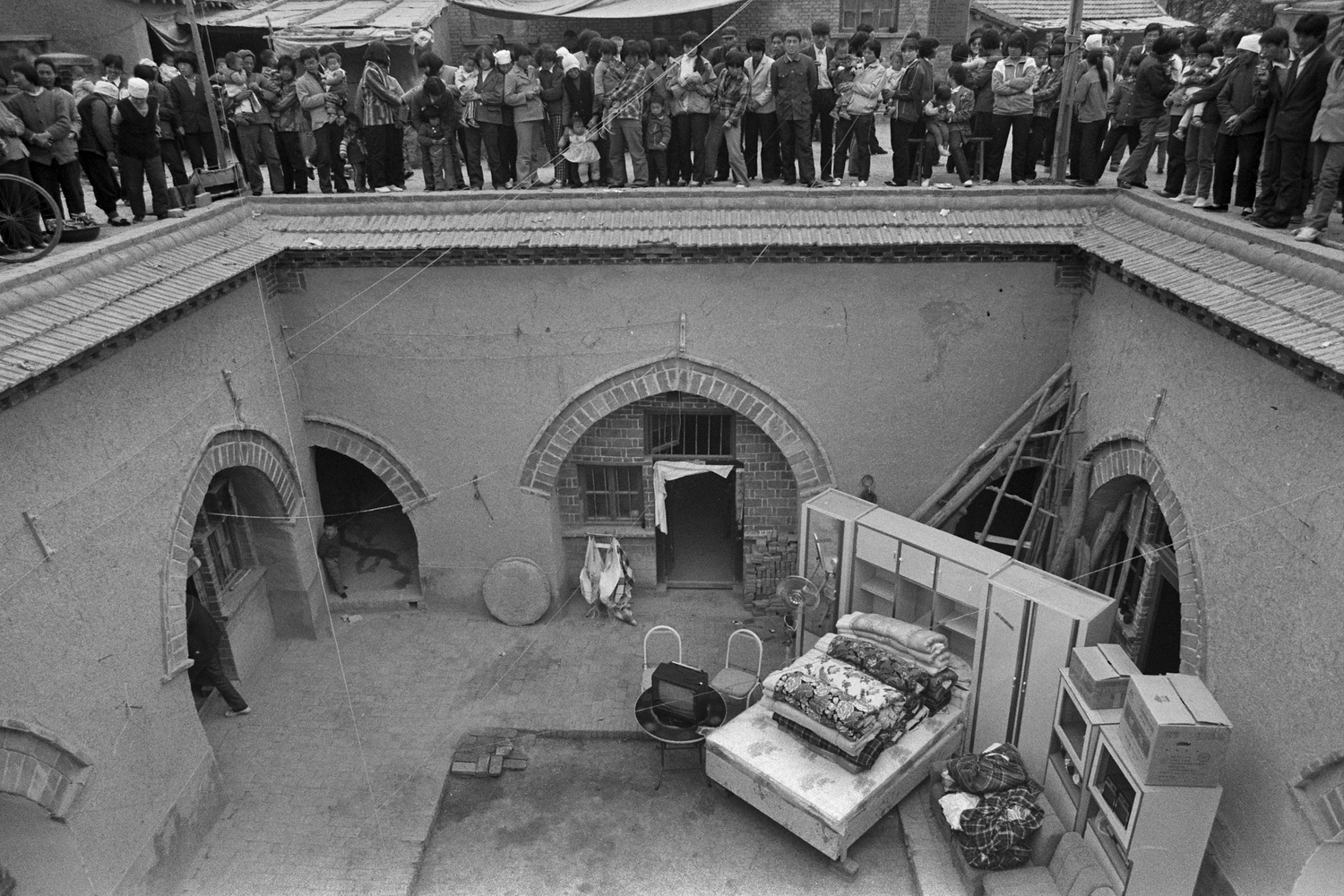
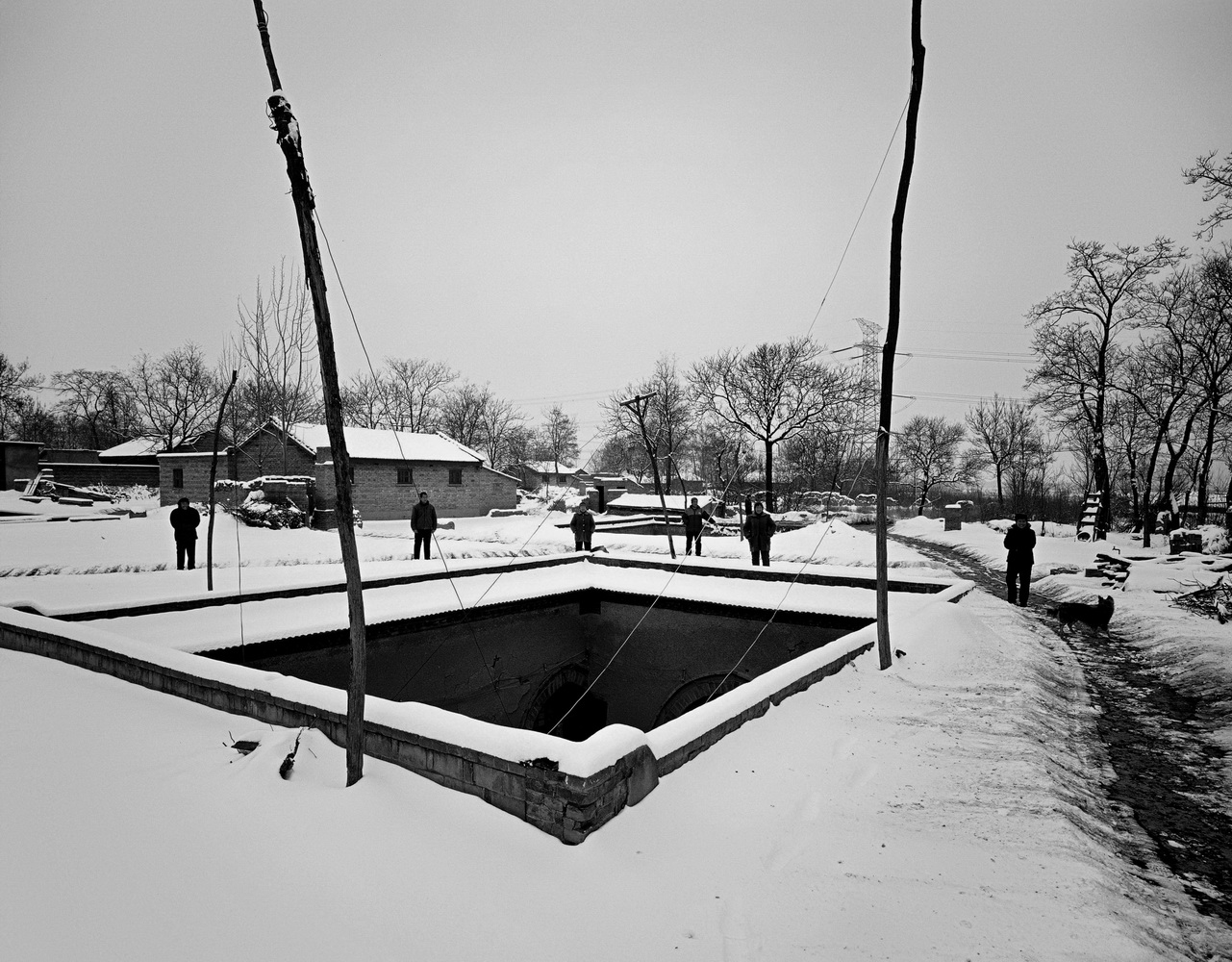
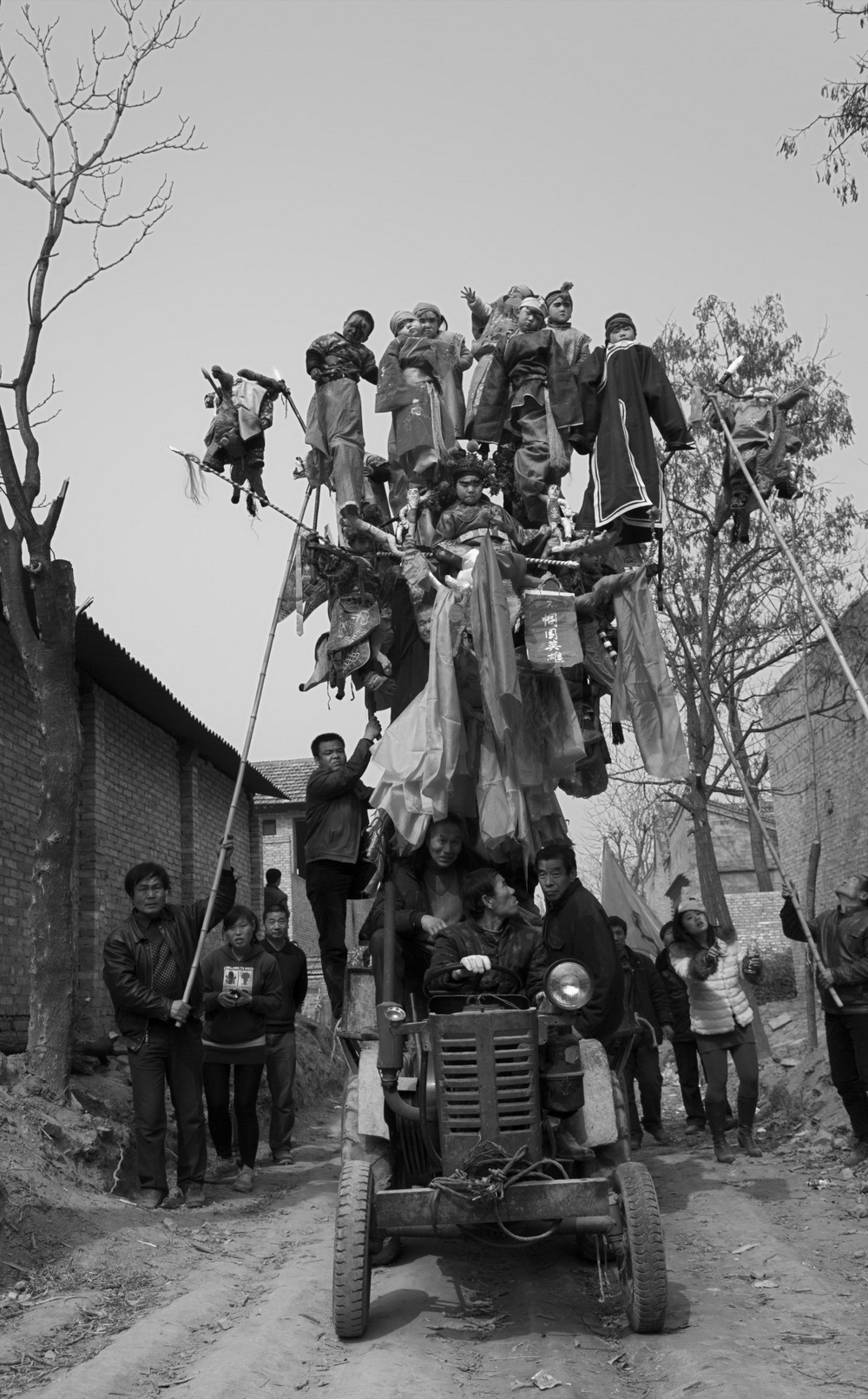
秦军校《终结小脚》书序
冯骥才
Not long ago, I received a paper bag from Qin Junxiao, Opening it; I found an album and two CDs inside, which are his photographic works. The album title named Photographing Chinese Women in Foot-bound which is a collection of photos that he took in Luliang, Yunnan Province, in 2004. In the artist statement of the booklet, he wrote, ““through the hard work of 17 years I finally completed the shooting for the book named End of Bound-feet Age – Investigation on Chinese Bound-feet Women and had it published through the Zhejiang Literature Publishing House. However, the feeling is not over at last. In October 2004, I walked into two towns in Luliang Yunnan and shot nearly 100 women with bound feet there in a period, completing this pure photo album named Photoing Women with Bound Feet. So far, I have finally completed the shooting of the women with bound feet in China.”
To be honest, I felt a bit surprised about the album at first. I hope him to show me his new themes and works, but the book is again about feet-bound women. Previously, he once published a book named “End of Bound-feet Age”. In my opinion, he has shot enough about the theme and it’s unnecessary to spend time repeating it. His persistent dedication to this subject bewilders me quite a lot.
Qin once told me, that his photographic works intend to record those vanishing Chinese cultural landscape, and folkway and tradition of his hometown in central China. I think it is a sound idea because what he wants to do is indeed rewarding. He took photos of local marriage ceremonies and funeral customs, and produced two albums of photography, one is Marriage and Funeral Customs, the other is Red and White, Weddings and Funerals. At the beginning of this year, he made a CD for me, which documented the caves that the Northern Chinese farmers live. Junxiao has a deep emotional complex about folk culture, thus his photographic work seems to be folk photography. What’s different is, that he has a little intention to protect the cultural heritage in his work.
Affected by actively promoting both modernization and globalization, traditional Chinese cultural heritage is dying at a phenomenal rate. Qin’s action of photographic salvation is admiring. There are also many endangered cultural heritage and some of them have disappeared before we have time to record. On May 20th, 2006, the State Council declared the first batch of intangible cultural heritage with 518 items, which include 31 items of folk literature, 72 items of folk music, 41 items of folk dancing, 92 items of traditional drama, 46 items of Chinese folk arts, 17 items of acrobatics and athletics, 51 items of folk fine arts, 89 items of traditional handicrafts, 9 items of traditional medicines and 70 items of folk customs. I once read a survey. In the 1950s, we had 368 sorts of Operas and theaters; however, it decreased to 317 in 1980s and 267 in 2005. A half of them are amateur performances, and 60 of them have no saved documents. Feng Jicai, who is the chairman of Chinese Folk Literature and Art Association, said that during the past 100 years, the loss of Chinese folk culture is very serious. Chinese fork cultural heritage is dying every minute! What Qin Junxiao did is very encouraging when facing the crisis for the cultural heritage.
I read the album: Photography for Foot-bound carefully and find Junxiao’s photos are simple, unadorned and always follow his usual style. But his profound investigation of foot-bound women really surprises me. I thought that foot-bound were abolished in the 1920s because of a new lifestyle and the Revolution of 1911. However, there were still many feet-bound women in the 1940s or 1950s by the investigation. For example, Wangqiaoguan, who lived in Luliang County, bounded her feet in 1952.
Han Youzhi bounded her feet around 1950. Why there were still so many foot-bound women? The first reason is that Luliang County is closed up from outside, and it is hard to accept new thoughts. The second reason is that the old custom is inveterately. It takes time to revive the culture.
I wonder, whether or not, these Yunnan women in Junxiao’s photos are the very last generation of foot-bound women; at least I hope they are. Foot-bound is one variety of sick culture, but reading these photos can help us reevaluate the traditional culture, Stay awake and be impartial, in order to avoid Gu Hongming’s way of “nostalgia addiction". However, from Qin’s perspective, I think his shooting of the women with bound feet should, up to now, really comes to an end.
On July 2000, exactly during the “fire” season in Xi’an, Qin Junxiao gave me an album named Wedding and Funeral Customs that I found heavy when I received it. No verbal communication happened between us as he had another social appointment. However, I could feel his enthusiasm.
When I started to read the book, it was in late winter, with snowflakes fluttering outside windows. The contrast of hot inside the book and cold outside the house suddenly helped me understand Qin Junxiao’s intention and care about the shooting and producing of Wedding and Funeral Customs. Every one of us has to face life and death in their life, but it brings endless mysteries of life and thousands of years of civilization history for us explore.
In Chinese people’s life, weddings and funerals are two big important events. Marriages and funerals, happiness and sorrow, just like two counterparts of summer and winter; both intensively reflect life consciousness and cultural orientation of Chinese people. Qin’s perception is acute and pertinent. This may benefit from his personal life experience: across time and space, from the Yellow River to Pearl River, from the north to the south, from land to the coast; the intense contrast of living environment directly brings him an influence of sharp comparison in his visual expression. This is sort of a modern viewpoint.
Chinese culture has a long and rich historical standing, merely it is basically a history about emperors, gifted scholars and beautiful ladies. The thinking of official standard edifies the highest value orientation of “being an official” of the nation's consciousness. Such contents as wanting and seeking an official place, being, eulogizing and writing about officials result in the completely original “official culture”. Qin’s intention lies in obtaining the subject matter and shooting objects on civilian themes from the point of view of a civilian. In fact, traditional Chinese culture has been inheriting according to two clues: One is the official culture. The right of writing and speaking are both in officials' hands, thus history becomes history created by them, and culture becomes the culture of the group of people who has the power. The other is the “civilian culture” also called “folk culture”, which cultivates in the daily life of masses from different areas and handed down from generation to generation. Taking a wedding ceremony as an example, folk procedures include sitting for wedding, crying for marriage, making the bed, breaking a vinegar jar, beating brooms, sharing steamed buns and having a harmonious dinner, etc. All of them must be carried out at a civil wedding ceremony in the central China of Shaanxi. Marriage is a product of civilization of human reproduction, of which a ceremony naturally assembles people’s understanding of lifespan, the experience of nature, and cognition of society. It is in all this integration that people experience their life.
During 5000 years from the beginning of the civilization to the present, besides fighting against the nature, the mankind had to suffer pillage and slaughter by its human enemies. Facing natural and man-caused disasters, how small and priceless individual lives are. As an individual, only when returning to their families, its life becomes more meaningful and precious. From the hints of those complicated and grand ceremonies of wedding, birth, and death, we can appreciate the return of human meaning and the recurrence of life value.
Long-term poverty has created a Chinese custom of treating their death seriously. From the funeral photos shot by Qin, we could have an idea about the Chinese view of life and death, which is nothing more than a comfort to people who suffered a lot for the lifetime. Similarly, the funeral customs in Shaanxi, include lighting a lamp, burning paper money, warming tombs, burying, mourning, a hundred-day’s worship and so on. Overall, it’s an endless yearning and remembrance for their life.
In these red and white folk ceremonies, in addition to the emphasis on and respect for man, there also exist the explanations of ethics and morality that is essential. For example, steamed buns appear at both weddings and funerals, but the patterns and implied meanings are quite different. In Shaanxi, “peach-shaped birthday steamed buns” are congratulation for wellness for old people, “dragon and phoenix shaped steamed buns” are for the wedding, “Qulian” is for a baby’ first month birthday ceremony. These patterned buns not only embody the specific relationships, but also express a wish. They are substantial and practical, spiritual and cultural, but the product of millennium’s agricultural civilization may gradually die out the social structure changes. Qin kept the everlasting humanistic information by taking photos of them and present to more audience.
Reading the album again and again, I was wondering what the meaning of the image exactly is? Firstly, photography conveys certain information. It tells what it is but not why. We understand the content of pictorial messages via "intellectual space” with the photos, and often receive additional un-signal information through the images. For example, from the work “Turmoil,” we understand how cruel the ‘Red Guards’ was, blind loyalty of the soldiers, and disgrace of those overthrown people during the Cultural Revolution. At the same time, we see the photographer’s standpoint of eulogizing the historical movement, and his honest desire to leave the historical materials for our future generations.
It is definitely not a subjective guess. This is the fact that any well-trained photographers can perceive without paying too many efforts. In a whole, Chinese people still have a long way to go for in-depth study and training on image awareness and its language.
Although the symbolic meaning of photos in Wedding and Funeral Customs is not prominent and saturated, but it indicates us the photographer’s civilian viewpoint and his attention to Chinese folk culture. Today, the core thing of accepting modern aesthetic studies is to accept the audience's psychological reaction, which is a third meaning of images we would like to discuss later.
It’s correct that image is a combination of intellectual space and information. Although intellectual information exists outside the intellectual space of images, they both are indispensable to photography. Either the meaning of communication or of symbolism is products of the specific cultural space, thus it is an intellectual space that can be understood and accepted. The intellectual space is similar to a fine "basket". As long as the recipient sees it, he or she will understand exchangeable messages inside the basket, and place more subjective feelings in it. This is what we mentioned as the original meaning of photography, also is the third kind of meaning of images.
Photography is aimed at the exchange and dissemination of information, but all its meaning has not come to an end. It is to stimulate the audience's sympathy and develop a larger imagination of the audience. It presents us with a very important problem of image quality. The third kind of meaning in photography is beyond images and indefinable, but it is actually based upon images, which requires what we contribute to the audience is not only a basket, still more a special basket, that is to say, the image space with plots, details and highlights. For the purpose of our accepting the experience, what often makes me pound the table and stand up is not the intellectual information, but the wonderful details, moving plots and instantaneous highlight in the images. Reading the Selecting the Dowries, I pay more attention to the kilns like an ancient bulwark. What I feel like knowing is what experience there will be when living in the kiln and what's on the 20-storied building, whether there is a toilet, how the water is used and drained, what the natural climate and geographical environment of the kiln are based upon, how the people on the island invented this unique building.
The work titled “Three-year-after Feast” seems to have “eyes” of a photo. In the picture, among a group of people wearing white mourning clothing, a man was trying to bite off the liquor cap, a capture is so vivid that call out all the personal experience and memories of myself. People from Henan are indeed acting like this at the special occasions.
Still now, we’ve seen the entire significance of photography. Photography is more than something discussed only in the forms category. It has a close relationship with social life, and makes it with enough vitality and complexity. If only considering photography as a structural framework of semiology, you would never enough to understand it comprehensively.
When I close the Wedding and Funeral Customs, it reminds me some recently published documentary books in the photography industry in China, which are hasty and sloppy, and a kind of like “occupying the hilltop and reorganizing asset”. Or maybe actually lack of both confidence and stamina. The photographers recommend the audience piles of photos only from their own wishful thinking. Most of the books, if taken them as report books, they have no corresponding research content about the discussed phenomena; if taken them as portfolio albums, they have no features of strict symbolized structuralism. We have to admit that, problems of “lacking of the process" in our photography industry have not been solved.
祖籍河南省三门峡市,现定居广东省深圳市。
深圳市摄影家协会副主席,中国摄影家协会纪实摄影委员会委员,中国民俗摄影协会助理会长、博学会士,世界华人摄影学会会员,广东省摄影家协会咨询顾问委员会委员,中国摄影函授学院深圳分院教授,中国图书出版社社长,港深珠澳摄影联盟主席,港深珠澳摄影报总编辑,1983年开始发表摄影作品。
展览;
2015年, 纪实摄影作品受邀参加首届“精彩瞬间——深圳市摄影家优秀作品“展览。
2010年9月,被邀请参加“深圳黑白典藏摄影24人展”,其作品在深圳华·美术馆展出。
2010年, 被邀请在上海参加全摄影画廊“夏至”收藏级作品摄影联展。
2008年6月,在深圳市民中心艺廊举办“历史深圳”个人摄影作品展。
2004年9月,倡导和推进了“人文深圳”摄影联展,并在第四届“平遥国际摄影节”上展出。
2004年1月,代表中国摄影家协会被邀请前往台湾参加“千禧之爱” 大型摄影展,参展题目“红白喜事”。
2003年9月,被邀请参加第三届“平遥国际摄影节”,参展题目“红白喜事”。
2002年12月,在北京民族文化宫举办“终结小脚——跨世纪的中国最后一代小脚女人”摄影展并举办研讨会。
2002年9月,作品“关注麻风岛”被再一次邀请参加中国首届“都匀国际摄影博览会”。
2001年9月,被邀请参加首届“平遥国际摄影节”,参展题目“关注麻风岛”。
2001年, 被邀请在北京参加“中国影像——痕”摄影联展。
收藏:
2011年10月,纪实摄影作品被深圳关山月美术馆收藏。
2011年6月, 纪实摄影作品被深圳华·美术馆收藏。
2010年11月,《终结小脚——中国妇女缠足考》从近五千本摄影书籍、画册中精选出并被编入《摄影好书选集》,被台湾摄影博物馆收藏。
2006年 《红白喜事》、《跨世纪的中国最后一代小脚女人》作品被河南博物院收藏。
2003年12月,被邀请参加广东美术馆“中国人本——纪实在当代”大型摄影展,作品被广东美术馆收藏。
出版:
2014年,《影像典藏》作品集文本面世
2013年,《我在三都过端节》,中国图书出版社
2010年,《地坑窑院——中国人最后的“穴居”式民居》,荣获“PIP——凤凰卫视优秀摄影画册奖”第一名。中国图书出版社
2005年,《为小脚女人留影》,中国图书出版社
2005年,《终结小脚——中国妇女缠足考》,浙江文艺出版社
2003年,《红白喜事》摄影画册,中国摄影出版社
2000年,《婚俗与丧俗》大型纪实摄影集,中国摄影出版社
荣誉称号:
2008年,荣获“广东摄影50年突出贡献摄影家”称号
2006年,荣获“中国摄影50年突出贡献摄影工作者”称号
2002年,被《摄影之友》杂志评为本年度中国摄影界重要人物之一。
Qin Xiaojun
Originally from Sanmenxia, Henan province. Currently lives in Shenzhen, Guangdong.
Served as vice chairman of Shenzhen Photographer Association, member of China Photographers' Association Documentary Photography Committee, assistant President of China Folk Photography Association, member of The Society of World Wide Ethnic Chinese Photographers Ltd., member of Advisory
Committee of Guangdong Photographers Association, professor of China Photography Correspondence College, Shenzhen Branch, president of China Book Publishing House, chairman of HSZM Photographic Alliance and chief director of HSZM Photographic Paper. He began to publish Photographic works
from 1983.
Exhibitions
2015 “Wonderful Moment– Shenzhen Excellent Photo Show”, Shenzhen
2010 “Black and White Collections of 24 Shenzhen’s Photographers”, OCT Art and Design Gallery, Shenzhen
2010 “Summer Solstice”, OFOTO Gallery, Shanghai.
“Shenzhen in History” , Art Gallery of Shenzhen Civic Center, Shenzhen
“Humanized Shenzhen”, Shenzhen
“Love of Millennium”, Taiwan
“Weddings and Funerals”, the 3rd Pingyao International Photography Festival
“End of Bound-feet Age——Trans-century Last Generation of Bound-feet Women in China” , Beijing Cultural Palace of Nationalities, Beijing
2002 “Caring for Lepra Island”, 1st China (Duyun) Int’l Photography Show
“Caring for Lepra Island”, the 1st Pingyao Int’l Photography Festival
“Chinese Photographic Works—— Marks”, Beijing
Collections
Documentary work collected by Shenzhen Guan-Shanyue Art Gallery
Documentary work collected Shenzhen-Hua Gallery
End of Bound-Feet Age –Investigation on Chinese Bound-feet Women, Taipei Art Museum of Photography
Weddings and Funerals and Last Generation of China’s Bound-Feet Women, Henan Museum of Art
Documentary photographic work presented at the exhibition “Documentary Photography In Contemporary Chinese”, collected by Guangdong Art Museum
Publications
"Image collection"
I Celebrated the Duan Festival in Sandu; China Book Publishing House
Sunken Courtyard of Cave Dwelling – Chinese Last Cave-style Folk House; Phoenix Satellite TV Good Photographic Album Award; China Book Publishing House
Photograhying the Women with Bound Feet; China Book Publishing House
End of Bound-Feet Age –Investigation on Chinese Bound-feet Women, Zhejiang Literature and Art Publishing House
“Weddings and Funerals” Photo Album; China Photographic Publishing House
“Wedding and Funeral Customs”, China Photographic Publishing House
Awards
Honor of Outstanding Contributor of Guangdong 50 years photography
Honor of Outstanding Contributor of China 50 years photography
“Outstanding Figures in Chinese Photography Industry”, Friends Of Photographing Magzine










秦军校《终结小脚》书序
冯骥才
前不久,收到秦军校兄寄来的一个纸袋。打开看,是一本小册子和两张光碟。光碟和册子里,都是他的摄影作品。小册子名为《为小脚女人留影》,收录了他2004年到云南省陆良县拍的照片。军校兄在册子中的《自述》里说:“历时十七年,终于完成了《终结小脚——中国妇女缠足考》这本图文书的拍摄任务,并由浙江文艺出版社出版发行。然而终结情未了。于是2004年10月,我又走进云南省陆良县的两个镇,在一个时间段内对这里的近百位小脚女人进行了一次拍摄,集成了这本《为小脚女人留影》的纯影像画册。至此,我对中国小脚女人的拍摄算是‘终结’了。”
说实话,看到这个小册子,叫我感到有些意外。我是希望军校兄给我看新的题材、新的作品,但是他出的这本书又是拍小脚老太太的。此前,他已经出版过《终结小脚》一书了,我觉得,这个题材,军校兄已经拍得足够了,似乎不必要再花钱花时间去重复。他对这个题材上的执着,叫我觉得费解。
军校兄跟我说过:他的摄影就是要记录那些行将消失的中国人文景观,记录他的老家中原地区的民俗和传统。我认为他的这个想法很好。摄影可以做很多事情,他要做的是很值得去做的事情之一。他以前还拍过中原地区的婚俗、丧俗,出版了《婚俗与丧俗》、《红白喜事》两本画册。今年初,他给我刻了一张光盘,选了他近年来拍的北方农民住过的窑洞。军校兄有文化情怀,尤其有很深的民间文化情怀。这使他的摄影看上去像是民俗摄影,可归入民俗摄影一类,但不同的是,他聚焦于那些正在走向消亡的民俗,因此具有抢救文化遗产的味道。
在积极推进现代化和全球化的双重作用下,中国固有的传统文化遗存正加速度消亡。军校兄的摄影救亡行动是让人敬重的。濒危的文化遗存太多了,有很多东西没来得及被记录已经消失了。2006年5月20日,国务院公布第一批国家级非物质文化遗产名录,就有518项之多。其中民间文学31项、民间音乐72项、民间舞蹈41项、传统戏剧92项、曲艺46项、杂技与竞技17项、民间美术51项、传统手工技艺89项、传统医药9项、民俗70项。我还看到一项调查,上世纪50年代,我国有戏曲戏剧368个种类,到上世纪80年代初减少到317个,2005年只剩下267个,其中一半剧种只能业余演出,有60个剧种没有保存音像资料。中国民间文艺家协会主席冯骥才说:这100多年来,中国民间文化的流失情况非常严重,几乎每一分钟都有民间文化遗产在消亡!面对这样的危机,我觉得军校兄的摄影大有可为,实在值得鼓励。
我认真看了《为小脚女人留影》这个册子。军校兄的影像平实、朴素,老老实实照相,不炫耀技巧,一点不耍花招,沿袭他一贯的摄影风格。但他对裹脚女人的调查,带来令我惊讶的新信息。我原来想,辛亥革命反对裹脚,主张天足,后来推行新的生活方式,缠足陋习渐被革除,上个世纪二三十年代缠足的妇女应该是最后一代小脚女人了。然而,军校兄的调查证明,到上个世纪四十年代甚至五十年代还有妇女裹脚!一个实例是陆良县三岔河镇的王桥关,她1940年出生,13岁开始缠足,也就是说她1952年开始缠足的。另一个实例是同一个镇上的韩有志,也是1940年出生,她10岁开始缠足,应该是在1950年或1949年。辛亥革命过去40年后,为什么还有妇女裹脚?我想,原因应该有两个。一,云南陆良偏远闭塞,新潮流新风尚抵达那里殊不易;二,旧习俗之顽固。习俗一伺成为习俗,流传日久,不论好坏,就根深蒂固了,要革新就要花时间。文化的革新比政治制度的革新慢得多。
不知道军校兄拍的云南这些妇女是不是中国的最后一代小脚女人,我希望是。缠足是中国传统文化中的病态一种,看这些照片有利于我们对今天又热起来的传统文化的再评估,保持清醒和公正,避免辜鸿铭式的文化“恋旧癖”复发。但是,从军校个人摄影的角度,我认为他对小脚女人的拍摄,至此真的应该结束了。
说实话,看到这个小册子,叫我感到有些意外。我是希望军校兄给我看新的题材、新的作品,但是他出的这本书又是拍小脚老太太的。此前,他已经出版过《终结小脚》一书了,我觉得,这个题材,军校兄已经拍得足够了,似乎不必要再花钱花时间去重复。他对这个题材上的执着,叫我觉得费解。
军校兄跟我说过:他的摄影就是要记录那些行将消失的中国人文景观,记录他的老家中原地区的民俗和传统。我认为他的这个想法很好。摄影可以做很多事情,他要做的是很值得去做的事情之一。他以前还拍过中原地区的婚俗、丧俗,出版了《婚俗与丧俗》、《红白喜事》两本画册。今年初,他给我刻了一张光盘,选了他近年来拍的北方农民住过的窑洞。军校兄有文化情怀,尤其有很深的民间文化情怀。这使他的摄影看上去像是民俗摄影,可归入民俗摄影一类,但不同的是,他聚焦于那些正在走向消亡的民俗,因此具有抢救文化遗产的味道。
在积极推进现代化和全球化的双重作用下,中国固有的传统文化遗存正加速度消亡。军校兄的摄影救亡行动是让人敬重的。濒危的文化遗存太多了,有很多东西没来得及被记录已经消失了。2006年5月20日,国务院公布第一批国家级非物质文化遗产名录,就有518项之多。其中民间文学31项、民间音乐72项、民间舞蹈41项、传统戏剧92项、曲艺46项、杂技与竞技17项、民间美术51项、传统手工技艺89项、传统医药9项、民俗70项。我还看到一项调查,上世纪50年代,我国有戏曲戏剧368个种类,到上世纪80年代初减少到317个,2005年只剩下267个,其中一半剧种只能业余演出,有60个剧种没有保存音像资料。中国民间文艺家协会主席冯骥才说:这100多年来,中国民间文化的流失情况非常严重,几乎每一分钟都有民间文化遗产在消亡!面对这样的危机,我觉得军校兄的摄影大有可为,实在值得鼓励。
我认真看了《为小脚女人留影》这个册子。军校兄的影像平实、朴素,老老实实照相,不炫耀技巧,一点不耍花招,沿袭他一贯的摄影风格。但他对裹脚女人的调查,带来令我惊讶的新信息。我原来想,辛亥革命反对裹脚,主张天足,后来推行新的生活方式,缠足陋习渐被革除,上个世纪二三十年代缠足的妇女应该是最后一代小脚女人了。然而,军校兄的调查证明,到上个世纪四十年代甚至五十年代还有妇女裹脚!一个实例是陆良县三岔河镇的王桥关,她1940年出生,13岁开始缠足,也就是说她1952年开始缠足的。另一个实例是同一个镇上的韩有志,也是1940年出生,她10岁开始缠足,应该是在1950年或1949年。辛亥革命过去40年后,为什么还有妇女裹脚?我想,原因应该有两个。一,云南陆良偏远闭塞,新潮流新风尚抵达那里殊不易;二,旧习俗之顽固。习俗一伺成为习俗,流传日久,不论好坏,就根深蒂固了,要革新就要花时间。文化的革新比政治制度的革新慢得多。
不知道军校兄拍的云南这些妇女是不是中国的最后一代小脚女人,我希望是。缠足是中国传统文化中的病态一种,看这些照片有利于我们对今天又热起来的传统文化的再评估,保持清醒和公正,避免辜鸿铭式的文化“恋旧癖”复发。但是,从军校个人摄影的角度,我认为他对小脚女人的拍摄,至此真的应该结束了。
平民视点与影像意义
——由《婚俗与丧俗》想到的
胡武功
——由《婚俗与丧俗》想到的
胡武功
2000年7月,正是“流火”季节,秦军校来西安送给我一本《婚俗与丧俗》画册,接过书沉甸甸的。因他另有应酬,相互没有交流。可我能感到他很热,像西安的天气。当我再翻这本书时,已是隆冬,窗外飘着雪花。这一热一冷,突然使我感到秦军校拍摄与自编婚俗与丧俗的良苦用心。人生在世,虽说只有生死二字,却由此引发了说不清的生命谜,数千年的文明史。
在中国人一生中,结婚与丧葬是天大的事情。一喜一悲,一红一白,就像截然相对的夏天与冬天。相对的两件事,集中体现着中国人的生命意识与文化取向。秦军校的这种感觉是敏锐的,也是中肯的。这也许得益于他跨越时空的生活经历:从黄河到珠江,从黄土地到蓝海滨。生存环境的强烈反差,直接给他带来视觉的鲜明对比。这是一种现代视点。
中国文化历史悠久丰富,但基本是一部帝王将相、才子佳人的历史。官本位的思想熏陶出这个民族意识中“做官”的最高价值取向。想官、谋官、做官、颂官、写官,编织成十分独到的“官文化”。秦军校的意义在于以平民的视点取平民的题材作平民的摄影。实际上,中国的传统文化一直是按照两条线索传承过来的。一条是官文化,文字、言说的权力都在“官”手中,历史就成了他们的历史,文化也就成了他们创造的文化。另一条是“民文化”,也可称俗文化。它们体现在地域和百姓的日常生活中,以一种风俗的方式甚至是一种生命存在的方式,代代沿袭下来。就婚礼仪式而言,关中民间的坐亲、哭嫁、开脸、铺床、镇新房、打醋坛、唱赞礼、拍扫帚、分喜馍、吃和气饭等,作为一种程式,是所有举行婚礼者必须进行的。而这些程式无不体现着对生命的渴盼,对人性的张扬,对伦理的复述,对人与自然合谐的礼赞。婚姻是人类文明传宗接代的产物,其仪式自然融汇了人对生命的理解,对自然的体验,对社会的认识。老百姓们就是在这一切综合之中,度过自己的人生历程。
人文初始至今的5000年,除了对自然的抗争,人类还要遭受来自自身利益集团的掠夺与杀戳。可以说是平民百姓的热血洗亮了利益集团的辉煌,是平民百姓的躯体铺垫了利益集团的宝座。在大自然的天灾与利益集团的拼杀面前,个体生命显得多么渺小,多么无价。作为人,平民只有回归家庭,回归个体时,其生命才显得重要,显得珍贵。从那些繁琐而隆重的婚礼、生育及死亡仪式的暗示中,我们才体味到人的意义的回归,生命价值的复现。
长期贫困,造就了中国人薄养厚葬的习俗。从秦军校的丧俗中,我们看到中国人的生死观。
这些隆重的丧礼仪式,无非是对辛勤一生的死者的无奈慰藉。同样,以我们熟悉的关中丧俗为例,正常死亡的丧礼包括点路灯、烧纸钱、小殓大殓、柏枝穿饼、安神点主、暖墓、埋葬、守孝、百日祭、过三年等等。总体印象是对生命的留恋和怀念。只有这时候,百姓才成为真正的贵人,自己心中的皇上。
在这些红白习俗中,除了对人重视和尊崇外,还有对人伦道德和人际关系的阐释与张扬,这对族群是必不可少的。例如画册中,红白习俗都有花馍的镜头,但花馍的图案和寓意是不同的。在关中,给老人祝寿送的是“寿桃”,满月送的是“曲联”,结婚送的是“龙凤呈祥”和“抓髻娃娃”。这些花馍不但体现着特定的人际关系,同时表达出一种心愿。它们既是物质的实用的,又是精神的文化的。但它们都是千年农业文明的产物,它们将随着工业与信息时代的到来而逐渐消亡。秦军校的意义在于给它们以诚实的纪录,为我们留下永久的人文资料。
反复翻阅《婚俗与丧俗》,我在想,影像的意义究竟何在?那红色的婚纱礼装,深入地下的地窑装饰成双喜洞房,迎亲的小车不再是花轿;而另一些影像却是白色的丧服,黑漆绘花的棺木,纸人纸马以及体现新追求的“彩电、冰箱、手机”……这些已经符号化的影像成为我们理解与相互沟通的“知性空间”。在这里我们获得了欲知,看见了可知,欣赏了能知。可见摄影首先是传达信息的过程。它告诉我们这是什么,但它却很难告诉我们为什么。我们通过图片的“知性空间”了解影像的内涵意义,我们常常又会通过影像感受到一种脱离既定知性空间的非符号化信息。例如《艰巨历程》中那组被评委们命名为《动乱》的照片,通过影像我们了解了“文革”中红卫兵的残忍、军人的愚忠、被打倒者的屈辱,同时看到了脱离“知性空间”的拍摄者认同讴歌“史无前例”的立场感情,看到了他要为“伟大实践”留下史料的初衷意愿。
这绝不是主观臆测。这是任何一个训练有素的摄影家和摄影记者都无须费力便可认知的符号化影像语言的含义。尽管从整体而言,我们民族缺乏影像意识及其语言的深入研究与训练,但摄影的题材、视点、光线、构图、快门和暗房技巧仍是所有专业摄影师的必修课程,即使在文革岁月,其符号性与“三突出”要求的结合,也构成了一目了然的“知性信息”。
如果说摄影的首要意义是传递交流信息,那么影像同时将表现拍摄者的“个性情感与精神分析的倾向”,即所谓影像的象征意义。“二俗”的题材,都发生在作者的家乡和亲属中,他选择“一喜一悲”的民俗题材,就已蕴含了明确的象征意义,正如秦军校在他的跋中说的那样:有辉煌就有衰败,有生命就有死亡,进而发出了“珍惜婚姻,珍惜生命”的感叹。
尽管《婚俗与丧俗》的影像象征意义并不是十分突出与饱和,但它仍然以其众多的“知性空间”,告诉我们作者的平民视点及其对平民习俗也即对平民文化的关注与珍惜。
现代接受美学的研究重点是接受者的心理反映,这也是我们所要谈及的影像的第三种意义。
不错,影像是一个知性空间与知性信息的结合体。尽管知性信息是游离于影像知性空间之外的,但却是摄影不可或缺的。无论摄影的交流传播意义还是由此派生的象征意义都是特定文化空间的产物,因而都是可以被理解与接受的知性空间。知性空间相当于一个精美的“筐”,接受者既看到了这个筐,理解了筐所提供的象征与可交流的东西,也可在筐中置入更多的主体感受。这就是我们所说的摄影的本体意义,也既是影像的第三种意义。摄影的目的在于交流与传播信息,但它的全部意义没有就此结束。它要刺激受众的共鸣,开拓受众更大的想象空间,它向我们提出了一个十分重要的关于影像的质量品质问题。尽管摄影的第三种意义是超越影像的和无法界定的,但确实是以影像为基础的。这就要求我们献给受众的不只是一个筐,更应是一个特殊的筐,即有情节有细节有亮点的影像空间。就我们的接受体验而言,常常并不是知性信息使我们拍案而起,而是影像中的精彩细节感人情节瞬间亮点使我们心潮起浮,联想翩翩。当我阅读《看嫁妆》时,眼光更多的停留在那古代瓮城般的地窑上,进而想到住地窑与住20层高楼是种怎样的体验,有没有厕所?用水排水怎样解决?而地窑的自然气候、地理环境的依据是什么?黄土地上的人们是怎么发明这种绝无仅有的建筑呢?
特殊的筐,还在于照片中影像的状态,情态和神态。照片中没有突出的“三态”,就像人没了眼睛,整体失去光彩。丧俗中《过三年的筵席》,是有“眼睛”的,因此整个照片放出了光彩。在一片穿白挂孝的人中间,那位身着暗色调的男人,张嘴咬掉酒瓶盖的状态和神态,调动了我的生活经验。河南人确实是这个样子,面对任何事情都有一种无所谓的精神。我由此想到,他们的指甲就是一把切西瓜的刀:划一道深深的印痕,一手压瓜,一手拍将下去,顺势一掰,西瓜分成两瓣。这时那“刀”的食指和中指并拢,略弯曲就变成了勺子,挖出瓜瓤送入口中。没有用具,绝挡不住河南人的吃喝。其生命的适应能力和顽韧性令人惊异。
文行于此,我们看到了摄影的全部意义。摄影确实不是只在形式范畴中讨论的事物。摄影与社会生活的密切联系,使之充满活力和复杂性。仅仅以符号学结构主义框架是难以全面把握摄影的。
当我合上《婚俗与丧俗》,想到最近摄影界出版的一些关于纪实性的书,显得匆忙、草率,有点“抢占山头,重组资产”的味道。抑或确实是底气不足,缺乏后劲。作者们一厢情愿地向读者推出一堆照片,说是报道集,没有现象学的研究文字;说是作品集,影像又缺乏较严格符号化结构主义特征。可见,我们摄影界的“缺程”问题,并非得到了真正的解决。
在中国人一生中,结婚与丧葬是天大的事情。一喜一悲,一红一白,就像截然相对的夏天与冬天。相对的两件事,集中体现着中国人的生命意识与文化取向。秦军校的这种感觉是敏锐的,也是中肯的。这也许得益于他跨越时空的生活经历:从黄河到珠江,从黄土地到蓝海滨。生存环境的强烈反差,直接给他带来视觉的鲜明对比。这是一种现代视点。
中国文化历史悠久丰富,但基本是一部帝王将相、才子佳人的历史。官本位的思想熏陶出这个民族意识中“做官”的最高价值取向。想官、谋官、做官、颂官、写官,编织成十分独到的“官文化”。秦军校的意义在于以平民的视点取平民的题材作平民的摄影。实际上,中国的传统文化一直是按照两条线索传承过来的。一条是官文化,文字、言说的权力都在“官”手中,历史就成了他们的历史,文化也就成了他们创造的文化。另一条是“民文化”,也可称俗文化。它们体现在地域和百姓的日常生活中,以一种风俗的方式甚至是一种生命存在的方式,代代沿袭下来。就婚礼仪式而言,关中民间的坐亲、哭嫁、开脸、铺床、镇新房、打醋坛、唱赞礼、拍扫帚、分喜馍、吃和气饭等,作为一种程式,是所有举行婚礼者必须进行的。而这些程式无不体现着对生命的渴盼,对人性的张扬,对伦理的复述,对人与自然合谐的礼赞。婚姻是人类文明传宗接代的产物,其仪式自然融汇了人对生命的理解,对自然的体验,对社会的认识。老百姓们就是在这一切综合之中,度过自己的人生历程。
人文初始至今的5000年,除了对自然的抗争,人类还要遭受来自自身利益集团的掠夺与杀戳。可以说是平民百姓的热血洗亮了利益集团的辉煌,是平民百姓的躯体铺垫了利益集团的宝座。在大自然的天灾与利益集团的拼杀面前,个体生命显得多么渺小,多么无价。作为人,平民只有回归家庭,回归个体时,其生命才显得重要,显得珍贵。从那些繁琐而隆重的婚礼、生育及死亡仪式的暗示中,我们才体味到人的意义的回归,生命价值的复现。
长期贫困,造就了中国人薄养厚葬的习俗。从秦军校的丧俗中,我们看到中国人的生死观。
这些隆重的丧礼仪式,无非是对辛勤一生的死者的无奈慰藉。同样,以我们熟悉的关中丧俗为例,正常死亡的丧礼包括点路灯、烧纸钱、小殓大殓、柏枝穿饼、安神点主、暖墓、埋葬、守孝、百日祭、过三年等等。总体印象是对生命的留恋和怀念。只有这时候,百姓才成为真正的贵人,自己心中的皇上。
在这些红白习俗中,除了对人重视和尊崇外,还有对人伦道德和人际关系的阐释与张扬,这对族群是必不可少的。例如画册中,红白习俗都有花馍的镜头,但花馍的图案和寓意是不同的。在关中,给老人祝寿送的是“寿桃”,满月送的是“曲联”,结婚送的是“龙凤呈祥”和“抓髻娃娃”。这些花馍不但体现着特定的人际关系,同时表达出一种心愿。它们既是物质的实用的,又是精神的文化的。但它们都是千年农业文明的产物,它们将随着工业与信息时代的到来而逐渐消亡。秦军校的意义在于给它们以诚实的纪录,为我们留下永久的人文资料。
反复翻阅《婚俗与丧俗》,我在想,影像的意义究竟何在?那红色的婚纱礼装,深入地下的地窑装饰成双喜洞房,迎亲的小车不再是花轿;而另一些影像却是白色的丧服,黑漆绘花的棺木,纸人纸马以及体现新追求的“彩电、冰箱、手机”……这些已经符号化的影像成为我们理解与相互沟通的“知性空间”。在这里我们获得了欲知,看见了可知,欣赏了能知。可见摄影首先是传达信息的过程。它告诉我们这是什么,但它却很难告诉我们为什么。我们通过图片的“知性空间”了解影像的内涵意义,我们常常又会通过影像感受到一种脱离既定知性空间的非符号化信息。例如《艰巨历程》中那组被评委们命名为《动乱》的照片,通过影像我们了解了“文革”中红卫兵的残忍、军人的愚忠、被打倒者的屈辱,同时看到了脱离“知性空间”的拍摄者认同讴歌“史无前例”的立场感情,看到了他要为“伟大实践”留下史料的初衷意愿。
这绝不是主观臆测。这是任何一个训练有素的摄影家和摄影记者都无须费力便可认知的符号化影像语言的含义。尽管从整体而言,我们民族缺乏影像意识及其语言的深入研究与训练,但摄影的题材、视点、光线、构图、快门和暗房技巧仍是所有专业摄影师的必修课程,即使在文革岁月,其符号性与“三突出”要求的结合,也构成了一目了然的“知性信息”。
如果说摄影的首要意义是传递交流信息,那么影像同时将表现拍摄者的“个性情感与精神分析的倾向”,即所谓影像的象征意义。“二俗”的题材,都发生在作者的家乡和亲属中,他选择“一喜一悲”的民俗题材,就已蕴含了明确的象征意义,正如秦军校在他的跋中说的那样:有辉煌就有衰败,有生命就有死亡,进而发出了“珍惜婚姻,珍惜生命”的感叹。
尽管《婚俗与丧俗》的影像象征意义并不是十分突出与饱和,但它仍然以其众多的“知性空间”,告诉我们作者的平民视点及其对平民习俗也即对平民文化的关注与珍惜。
现代接受美学的研究重点是接受者的心理反映,这也是我们所要谈及的影像的第三种意义。
不错,影像是一个知性空间与知性信息的结合体。尽管知性信息是游离于影像知性空间之外的,但却是摄影不可或缺的。无论摄影的交流传播意义还是由此派生的象征意义都是特定文化空间的产物,因而都是可以被理解与接受的知性空间。知性空间相当于一个精美的“筐”,接受者既看到了这个筐,理解了筐所提供的象征与可交流的东西,也可在筐中置入更多的主体感受。这就是我们所说的摄影的本体意义,也既是影像的第三种意义。摄影的目的在于交流与传播信息,但它的全部意义没有就此结束。它要刺激受众的共鸣,开拓受众更大的想象空间,它向我们提出了一个十分重要的关于影像的质量品质问题。尽管摄影的第三种意义是超越影像的和无法界定的,但确实是以影像为基础的。这就要求我们献给受众的不只是一个筐,更应是一个特殊的筐,即有情节有细节有亮点的影像空间。就我们的接受体验而言,常常并不是知性信息使我们拍案而起,而是影像中的精彩细节感人情节瞬间亮点使我们心潮起浮,联想翩翩。当我阅读《看嫁妆》时,眼光更多的停留在那古代瓮城般的地窑上,进而想到住地窑与住20层高楼是种怎样的体验,有没有厕所?用水排水怎样解决?而地窑的自然气候、地理环境的依据是什么?黄土地上的人们是怎么发明这种绝无仅有的建筑呢?
特殊的筐,还在于照片中影像的状态,情态和神态。照片中没有突出的“三态”,就像人没了眼睛,整体失去光彩。丧俗中《过三年的筵席》,是有“眼睛”的,因此整个照片放出了光彩。在一片穿白挂孝的人中间,那位身着暗色调的男人,张嘴咬掉酒瓶盖的状态和神态,调动了我的生活经验。河南人确实是这个样子,面对任何事情都有一种无所谓的精神。我由此想到,他们的指甲就是一把切西瓜的刀:划一道深深的印痕,一手压瓜,一手拍将下去,顺势一掰,西瓜分成两瓣。这时那“刀”的食指和中指并拢,略弯曲就变成了勺子,挖出瓜瓤送入口中。没有用具,绝挡不住河南人的吃喝。其生命的适应能力和顽韧性令人惊异。
文行于此,我们看到了摄影的全部意义。摄影确实不是只在形式范畴中讨论的事物。摄影与社会生活的密切联系,使之充满活力和复杂性。仅仅以符号学结构主义框架是难以全面把握摄影的。
当我合上《婚俗与丧俗》,想到最近摄影界出版的一些关于纪实性的书,显得匆忙、草率,有点“抢占山头,重组资产”的味道。抑或确实是底气不足,缺乏后劲。作者们一厢情愿地向读者推出一堆照片,说是报道集,没有现象学的研究文字;说是作品集,影像又缺乏较严格符号化结构主义特征。可见,我们摄影界的“缺程”问题,并非得到了真正的解决。
The Preface of End of the Bound-feet Age
By Feng Jicai
By Feng Jicai
Not long ago, I received a paper bag from Qin Junxiao, Opening it; I found an album and two CDs inside, which are his photographic works. The album title named Photographing Chinese Women in Foot-bound which is a collection of photos that he took in Luliang, Yunnan Province, in 2004. In the artist statement of the booklet, he wrote, ““through the hard work of 17 years I finally completed the shooting for the book named End of Bound-feet Age – Investigation on Chinese Bound-feet Women and had it published through the Zhejiang Literature Publishing House. However, the feeling is not over at last. In October 2004, I walked into two towns in Luliang Yunnan and shot nearly 100 women with bound feet there in a period, completing this pure photo album named Photoing Women with Bound Feet. So far, I have finally completed the shooting of the women with bound feet in China.”
To be honest, I felt a bit surprised about the album at first. I hope him to show me his new themes and works, but the book is again about feet-bound women. Previously, he once published a book named “End of Bound-feet Age”. In my opinion, he has shot enough about the theme and it’s unnecessary to spend time repeating it. His persistent dedication to this subject bewilders me quite a lot.
Qin once told me, that his photographic works intend to record those vanishing Chinese cultural landscape, and folkway and tradition of his hometown in central China. I think it is a sound idea because what he wants to do is indeed rewarding. He took photos of local marriage ceremonies and funeral customs, and produced two albums of photography, one is Marriage and Funeral Customs, the other is Red and White, Weddings and Funerals. At the beginning of this year, he made a CD for me, which documented the caves that the Northern Chinese farmers live. Junxiao has a deep emotional complex about folk culture, thus his photographic work seems to be folk photography. What’s different is, that he has a little intention to protect the cultural heritage in his work.
Affected by actively promoting both modernization and globalization, traditional Chinese cultural heritage is dying at a phenomenal rate. Qin’s action of photographic salvation is admiring. There are also many endangered cultural heritage and some of them have disappeared before we have time to record. On May 20th, 2006, the State Council declared the first batch of intangible cultural heritage with 518 items, which include 31 items of folk literature, 72 items of folk music, 41 items of folk dancing, 92 items of traditional drama, 46 items of Chinese folk arts, 17 items of acrobatics and athletics, 51 items of folk fine arts, 89 items of traditional handicrafts, 9 items of traditional medicines and 70 items of folk customs. I once read a survey. In the 1950s, we had 368 sorts of Operas and theaters; however, it decreased to 317 in 1980s and 267 in 2005. A half of them are amateur performances, and 60 of them have no saved documents. Feng Jicai, who is the chairman of Chinese Folk Literature and Art Association, said that during the past 100 years, the loss of Chinese folk culture is very serious. Chinese fork cultural heritage is dying every minute! What Qin Junxiao did is very encouraging when facing the crisis for the cultural heritage.
I read the album: Photography for Foot-bound carefully and find Junxiao’s photos are simple, unadorned and always follow his usual style. But his profound investigation of foot-bound women really surprises me. I thought that foot-bound were abolished in the 1920s because of a new lifestyle and the Revolution of 1911. However, there were still many feet-bound women in the 1940s or 1950s by the investigation. For example, Wangqiaoguan, who lived in Luliang County, bounded her feet in 1952.
Han Youzhi bounded her feet around 1950. Why there were still so many foot-bound women? The first reason is that Luliang County is closed up from outside, and it is hard to accept new thoughts. The second reason is that the old custom is inveterately. It takes time to revive the culture.
I wonder, whether or not, these Yunnan women in Junxiao’s photos are the very last generation of foot-bound women; at least I hope they are. Foot-bound is one variety of sick culture, but reading these photos can help us reevaluate the traditional culture, Stay awake and be impartial, in order to avoid Gu Hongming’s way of “nostalgia addiction". However, from Qin’s perspective, I think his shooting of the women with bound feet should, up to now, really comes to an end.
Civilian’s Viewpoint and Significance of Image
-- Thoughts about Wedding and Funeral Customs
By Hu Wugong
-- Thoughts about Wedding and Funeral Customs
By Hu Wugong
On July 2000, exactly during the “fire” season in Xi’an, Qin Junxiao gave me an album named Wedding and Funeral Customs that I found heavy when I received it. No verbal communication happened between us as he had another social appointment. However, I could feel his enthusiasm.
When I started to read the book, it was in late winter, with snowflakes fluttering outside windows. The contrast of hot inside the book and cold outside the house suddenly helped me understand Qin Junxiao’s intention and care about the shooting and producing of Wedding and Funeral Customs. Every one of us has to face life and death in their life, but it brings endless mysteries of life and thousands of years of civilization history for us explore.
In Chinese people’s life, weddings and funerals are two big important events. Marriages and funerals, happiness and sorrow, just like two counterparts of summer and winter; both intensively reflect life consciousness and cultural orientation of Chinese people. Qin’s perception is acute and pertinent. This may benefit from his personal life experience: across time and space, from the Yellow River to Pearl River, from the north to the south, from land to the coast; the intense contrast of living environment directly brings him an influence of sharp comparison in his visual expression. This is sort of a modern viewpoint.
Chinese culture has a long and rich historical standing, merely it is basically a history about emperors, gifted scholars and beautiful ladies. The thinking of official standard edifies the highest value orientation of “being an official” of the nation's consciousness. Such contents as wanting and seeking an official place, being, eulogizing and writing about officials result in the completely original “official culture”. Qin’s intention lies in obtaining the subject matter and shooting objects on civilian themes from the point of view of a civilian. In fact, traditional Chinese culture has been inheriting according to two clues: One is the official culture. The right of writing and speaking are both in officials' hands, thus history becomes history created by them, and culture becomes the culture of the group of people who has the power. The other is the “civilian culture” also called “folk culture”, which cultivates in the daily life of masses from different areas and handed down from generation to generation. Taking a wedding ceremony as an example, folk procedures include sitting for wedding, crying for marriage, making the bed, breaking a vinegar jar, beating brooms, sharing steamed buns and having a harmonious dinner, etc. All of them must be carried out at a civil wedding ceremony in the central China of Shaanxi. Marriage is a product of civilization of human reproduction, of which a ceremony naturally assembles people’s understanding of lifespan, the experience of nature, and cognition of society. It is in all this integration that people experience their life.
During 5000 years from the beginning of the civilization to the present, besides fighting against the nature, the mankind had to suffer pillage and slaughter by its human enemies. Facing natural and man-caused disasters, how small and priceless individual lives are. As an individual, only when returning to their families, its life becomes more meaningful and precious. From the hints of those complicated and grand ceremonies of wedding, birth, and death, we can appreciate the return of human meaning and the recurrence of life value.
Long-term poverty has created a Chinese custom of treating their death seriously. From the funeral photos shot by Qin, we could have an idea about the Chinese view of life and death, which is nothing more than a comfort to people who suffered a lot for the lifetime. Similarly, the funeral customs in Shaanxi, include lighting a lamp, burning paper money, warming tombs, burying, mourning, a hundred-day’s worship and so on. Overall, it’s an endless yearning and remembrance for their life.
In these red and white folk ceremonies, in addition to the emphasis on and respect for man, there also exist the explanations of ethics and morality that is essential. For example, steamed buns appear at both weddings and funerals, but the patterns and implied meanings are quite different. In Shaanxi, “peach-shaped birthday steamed buns” are congratulation for wellness for old people, “dragon and phoenix shaped steamed buns” are for the wedding, “Qulian” is for a baby’ first month birthday ceremony. These patterned buns not only embody the specific relationships, but also express a wish. They are substantial and practical, spiritual and cultural, but the product of millennium’s agricultural civilization may gradually die out the social structure changes. Qin kept the everlasting humanistic information by taking photos of them and present to more audience.
Reading the album again and again, I was wondering what the meaning of the image exactly is? Firstly, photography conveys certain information. It tells what it is but not why. We understand the content of pictorial messages via "intellectual space” with the photos, and often receive additional un-signal information through the images. For example, from the work “Turmoil,” we understand how cruel the ‘Red Guards’ was, blind loyalty of the soldiers, and disgrace of those overthrown people during the Cultural Revolution. At the same time, we see the photographer’s standpoint of eulogizing the historical movement, and his honest desire to leave the historical materials for our future generations.
It is definitely not a subjective guess. This is the fact that any well-trained photographers can perceive without paying too many efforts. In a whole, Chinese people still have a long way to go for in-depth study and training on image awareness and its language.
Although the symbolic meaning of photos in Wedding and Funeral Customs is not prominent and saturated, but it indicates us the photographer’s civilian viewpoint and his attention to Chinese folk culture. Today, the core thing of accepting modern aesthetic studies is to accept the audience's psychological reaction, which is a third meaning of images we would like to discuss later.
It’s correct that image is a combination of intellectual space and information. Although intellectual information exists outside the intellectual space of images, they both are indispensable to photography. Either the meaning of communication or of symbolism is products of the specific cultural space, thus it is an intellectual space that can be understood and accepted. The intellectual space is similar to a fine "basket". As long as the recipient sees it, he or she will understand exchangeable messages inside the basket, and place more subjective feelings in it. This is what we mentioned as the original meaning of photography, also is the third kind of meaning of images.
Photography is aimed at the exchange and dissemination of information, but all its meaning has not come to an end. It is to stimulate the audience's sympathy and develop a larger imagination of the audience. It presents us with a very important problem of image quality. The third kind of meaning in photography is beyond images and indefinable, but it is actually based upon images, which requires what we contribute to the audience is not only a basket, still more a special basket, that is to say, the image space with plots, details and highlights. For the purpose of our accepting the experience, what often makes me pound the table and stand up is not the intellectual information, but the wonderful details, moving plots and instantaneous highlight in the images. Reading the Selecting the Dowries, I pay more attention to the kilns like an ancient bulwark. What I feel like knowing is what experience there will be when living in the kiln and what's on the 20-storied building, whether there is a toilet, how the water is used and drained, what the natural climate and geographical environment of the kiln are based upon, how the people on the island invented this unique building.
The work titled “Three-year-after Feast” seems to have “eyes” of a photo. In the picture, among a group of people wearing white mourning clothing, a man was trying to bite off the liquor cap, a capture is so vivid that call out all the personal experience and memories of myself. People from Henan are indeed acting like this at the special occasions.
Still now, we’ve seen the entire significance of photography. Photography is more than something discussed only in the forms category. It has a close relationship with social life, and makes it with enough vitality and complexity. If only considering photography as a structural framework of semiology, you would never enough to understand it comprehensively.
When I close the Wedding and Funeral Customs, it reminds me some recently published documentary books in the photography industry in China, which are hasty and sloppy, and a kind of like “occupying the hilltop and reorganizing asset”. Or maybe actually lack of both confidence and stamina. The photographers recommend the audience piles of photos only from their own wishful thinking. Most of the books, if taken them as report books, they have no corresponding research content about the discussed phenomena; if taken them as portfolio albums, they have no features of strict symbolized structuralism. We have to admit that, problems of “lacking of the process" in our photography industry have not been solved.


 豫公网安备 41019602002106号
豫公网安备 41019602002106号